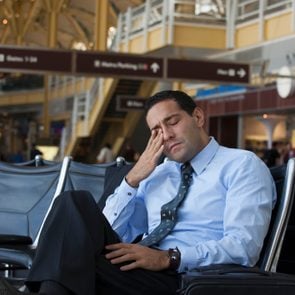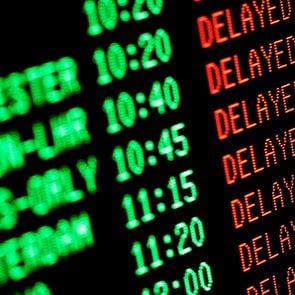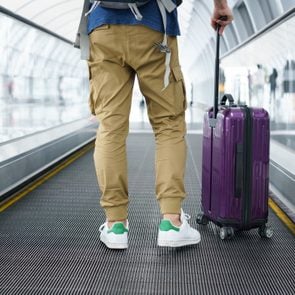Here’s How to Decode the Secret Meanings Behind Your Flight Number
Updated: Mar. 15, 2024
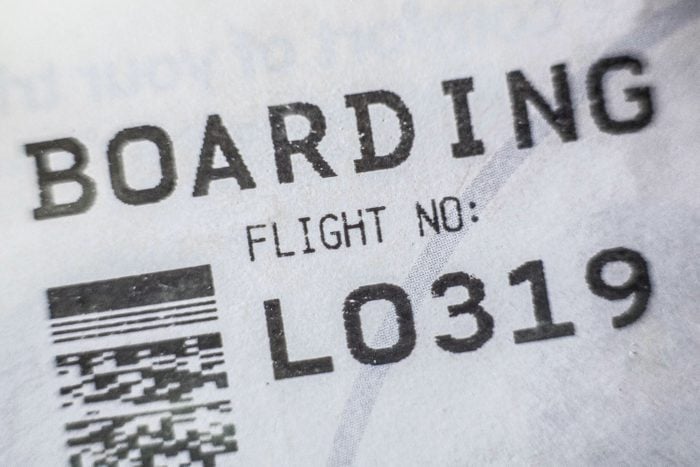
You hear them called out every time you fly, but what do those flight numbers really mean—and how important are they?
“Welcome to the boarding area for United Airlines flight 5589 with nonstop service to Washington.” If you fly with any regularity, it’s the type of welcome announcement you’re probably so used to, it’s second nature. Chances are, when you hear it, you know two things: You’re boarding soon, and you’ve made it to the correct gate. But have you ever wondered what’s behind the flight numbers being announced?
Every single flight has a flight number, no matter the airline—even canceled flights. And no, it’s not some secret language of flight attendants. That code is an important flight feature that keeps our air travel system running smoothly. Here’s what you need to know.
Get Reader’s Digest’s Read Up newsletter for humor, cleaning, travel, tech and fun facts all week long.
How do I find out a flight number?
Your flight number is a short code of two letters followed by one to four numbers. For instance, United Airlines flight 5589 would appear as UA5589. But where do you look for it? Easy: It’s all over the place. You’ll see it when you search a flight, book a flight and as you travel. You can find flight numbers in all sorts of places, including:
- In a flight confirmation email
- On your airline’s app, if you have a frequent flyer account (once you’ve booked a flight, the flight numbers will show up in the app)
- On your bag tag once you’ve checked a bag
- On the delays and cancellations board at the airport
- At the top of your boarding pass (mobile or physical)
- At your gate on the screen in the boarding area
- On your in-flight entertainment screen (if you have one)
What do flight numbers mean?
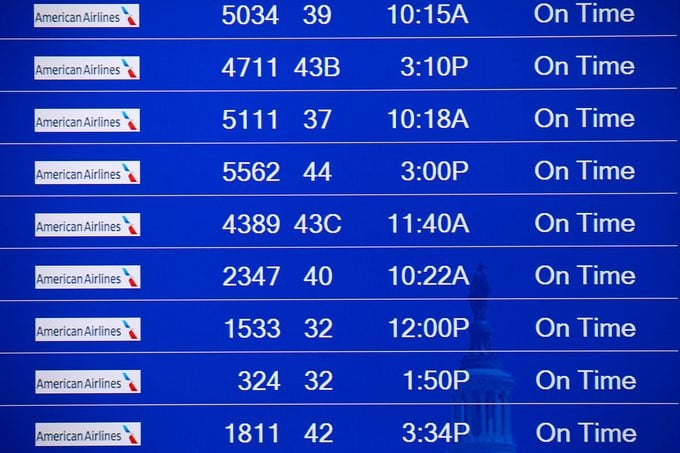
A flight number is a unique identifier for a flight. It helps everyone from the passengers and pilots to the flight attendants, customer service representatives and air traffic control specify exactly what fight, operated by which airline, they’re talking about.
You can imagine why it would be needed: The Federal Aviation Administration handles roughly 45,000 flights per day. On any given day, there are dozens of flights between New York and Chicago, for instance. And in Chicago at O’Hare International Airport alone, one flight takes off or lands every 45 seconds, on average.
“It’s there to keep things consistent and safe, so there’s not a lot of confusion [and] so it’s easy to track the flights,” says Dan Bubb, PhD, a professor and aviation expert at the University of Nevada Las Vegas and a former airline pilot. And while the flight numbers might look random to you, there’s a lot that goes into generating them.
Designated letters
Most flight numbers start with letters that stand for your airline. The International Air Transport Association (IATA) has assigned codes for each major global airline to help keep things consistent, whether you’re flying from Nebraska to Florida, the U.S. to the U.K., or France to Asia.
It’s often easy to remember many U.S. airlines’ codes. American Airlines is “AA.” Delta Air Lines is “DL.” United Airlines is “UA.” Others are a little more obscure. JetBlue’s designator, for instance, is “B6.” Often, your gate agent will say the full airline name though, so “American Airlines” instead of “AA.”
Numbers
After the airline code comes the number portion of your flight number. At your gate, you might hear “American Airlines flight 2105 will soon be boarding.” On the departures and arrivals board at the airport, though, that would look like AA2105.
The numbers reference a specific flight, not an airplane. For instance, multiple aircraft may be used for the same flight number. So don’t confuse it with a plane’s tail number.
Keep in mind, your flight number is also different from your confirmation number, which is typically comprised of more letters (and a few numbers), which helps the airline identify your reservation. And, all those are still different from your frequent flyer number, which you can think of as your unique ID number within the airline’s loyalty program. These numbers are structured differently on each airline.
How do airlines choose a flight number?
There’s a lot that goes into generating a flight number, Bubb says, most of which is done electronically. “They have a computer that does all this,” he says. “So it’s already all kind of pre-planned.”
That’s not to say it’s all automated and random, though. As a general (but often broken) rule of thumb, airlines prefer to use even numbers if they’re flying east or north and odd numbers if they’re flying west or south, Bubb says.
Is he right? It seems so. Checking flight statuses as I write this, Delta Air Lines flight 136 (even number) is an eastbound flight from Detroit to Amsterdam. Often, the return trip is the subsequent number, Bubb adds. Delta Air Lines flight 137 is Amsterdam to Detroit, for instance. This pattern is a little easier to maintain with longer international flights, compared with the thousands of daily domestic flights hopping from one U.S. city to the next, Bubb points out.
You’ll also see airlines designate lower-digit flight numbers to international or priority flights, and higher-digit numbers to shorter domestic flights. On the day of writing this, UA5789 (United Airlines flight 5789) is a short hop from Lafayette, Louisiana, to Houston on a small jet. On the other hand, AA1 (American Airlines flight 1) goes from New York’s John F. Kennedy International Airport (JFK) to Los Angeles International Airport (LAX). Flight 1 is often a prominent flight, says Bubb. Frequently, airlines will use the same flight number for the same route, day after day, for the purposes of consistency.
Are certain airline flight numbers avoided?
Airlines do tend to stay away from some flight numbers, such as numbers of flights where a tragedy took place. “Just out of respect,” Bubb says, “and also out of a grieving for what happened.”
Airlines retired flight numbers associated with the airplanes involved in the September 11 terrorist attacks, for instance. Years ago, United Airlines announced it would permanently retire fight numbers 175 and 93 (although a glitch in 2011 led to those numbers briefly and inadvertently being used—the airline later apologized).
Do you really need to pay attention to your flight number?
Ultimately, it’s just some good airplane trivia to know what’s behind your flight number—there aren’t too many instances where you’ll need to know it off the top of your head. Generally, airline customer service agents assisting you won’t ask for your flight number. Instead, they’ll ask for your confirmation number (also known as your record locator).
And, in almost every case, the flight number is on display by the airline and accompanied by the departure and destination airport and departure time, so it’s easy to spot. As a regular flyer, I seldom even look at my flight number.
But for air traffic control personnel who sort through thousands of flights every day, “it’s mostly for consistency and ease of tracking flights, so you don’t confuse everybody,” Bubb says.
About the expert
- Dan Bubb, PhD, is an aviation historian and associate professor at the University of Nevada Las Vegas (UNLV). An expert in commercial aviation, he’s the deputy director of the Nevada Aerospace Hall of Fame. He’s also a former airline pilot.
Sources:
- International Air Transport Association: “IATA Airline and Location Codes”
- Federal Aviation Administration: “Air traffic by the numbers”
- Daily Herald: “O’Hare remains the second busiest airport in the nation”

